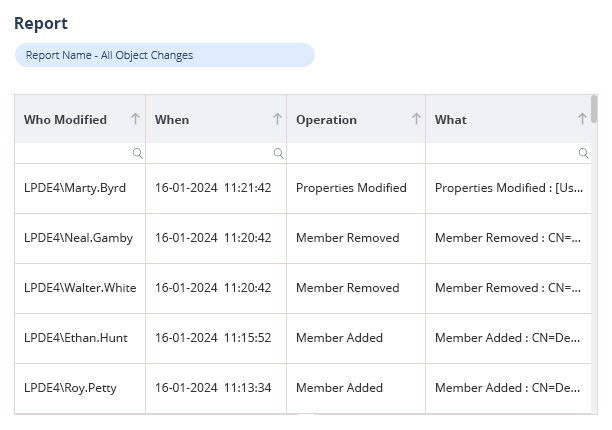Last Updated on May 8, 2025 by Deepanshu Sharma

Active Directory Domain Services (AD DS) plays a crucial role in managing users and computers, as well as allowing system administrators to organize data into logical hierarchies. AD DS provides a range of features, including security certificates, single sign-on (SSO), LDAP, and rights management, which enable secure and efficient management of network resources. As a result, understanding AD DS is a top priority for both incident response (IR) and general cybersecurity practitioners, as it is a critical component of the organization’s overall security posture. Moreover, it is essential for cybersecurity professionals to know how to detect and respond to potential attacks on AD DS.
What is Active Directory Domain Services (AD DS)?
Active Directory Domain Services (AD DS) is a server role that enables administrators to manage and store information about various aspects of a network, including resources, application data, and user information. This information is stored in a distributed database, allowing administrators to access and manage it from a centralized location. AD DS also helps administrators manage and organize network elements, such as computing devices, users, and other resources, by reorganizing them into a custom hierarchical structure. Additionally, AD DS integrates security features to ensure that access to directory resources is controlled and secure, including authenticating logons and controlling access to directory resources. By providing a robust and centralized platform for managing and organizing network data, AD DS plays a critical role in enabling efficient and secure network operations.
Active Directory Domain Services Terms
Below are some of the most common terms associated with AD DS:
Global Catalog: A central repository that stores all Active Directory objects, allowing administrators to search and locate directory information (such as a username) across multiple domains.
LDAP (Lightweight Directory Access Protocol): The protocol that enables communication between servers and clients within the directory, facilitating the exchange of information.
Multi-master replication: A feature that ensures all domain controllers on a network are synchronized and updated with any changes made to Active Directory, ensuring consistency and reliability.
Objects: The individual pieces of information that Active Directory organizes and manages, including:
- Container objects: Organizational units that serve as containers for other objects, such as forests and trees, which hold other objects within them.
- Leaf objects: Representing individual entities, such as users, computers, and devices, which are part of the directory.
uery and index mechanism: A feature that enables users to search the global catalog for directory information, facilitating quick and efficient location of specific objects.
Schema: A set of rules that define the structure and properties of objects within the directory, including the classes, attributes, and naming conventions.
Sites: Physical groupings of IP subnets that enable efficient replication of information between domain controllers and deployment of group policies, improving network performance and management.
How Does Active Directory Domian Services Work?
One of Active Directory’s core components, AD DS enables user authentication and network resource access. To organize data in a hierarchical fashion, Active Directory is mostly built on several standards and protocols, including LDAP, Kerberos, and DNS. Users are able to access and control them, and several domain services are able to communicate with them. The main components of the hierarchy’s structure are:
- Domains: An Active Directory domain refers to a group, endpoint, or user that shares the same AD administration, security, and replication configurations. Operating on Active Directory domains allows IT businesses to centrally manage a group of devices, services, and systems and set up administrative boundaries. Numerous subdomains may exist within a single domain, and those subdomains may have other subdomains. A transitive trust connection is used in the domain to authenticate users.
- Trees: Trees outline a structured collection of domains that are all part of the same namespace and are bounded by trust connections that create parent-child bonds. In Active Directory Domain Services, a tree is made up of multiple domains connected by two-way transitive trusts. An AD DS tree’s global catalog and schema are the same for each domain. For instance, a subdomain or branch of the same business.
- Forest: The term “forest” refers to a collection of trees that share distinct name spaces. The term “forest” describes the highest level of Active Directory Domain Service configuration organization, which unifies one or more domains into a single structure. Domains, services, users, and group policies create a forest. Each forest has its own database security border and global address list. A user or IT administrator in one forest is by default unable to access another forest. Just as domains in a tree share trusts, so do trees in an AD forest. This would enable the sharing of configuration specifications and directory schemas among the component parts of a tree or forest.
- Organizational Unit (OU): The organizational unit refers to the containers in the Active Directory for computers, groups and users. It is deemed to be the smallest unit to which the IT staff can delegate account permissions or group policy settings. The organizational units are handy when group policy settings are being applied to a subset of users, groups or computers within your domain. In effect, organizational units are a subunit of an Active Directory domain that can be employed to cluster objects.
What Services Does Active Directory Domian Services Support?
AD DS supports a range of vital services, which include:
Domain Services: manages centralized directory information, facilitating communication between users and domains, and ensures secure login authentication and access permissions.
Lightweight Directory Services (LDS): enables cross-platform compatibility, allowing devices like Linux-based computers to integrate seamlessly with the network.
Active Directory Federation Services (AD FS): streamlines authentication, providing users with single sign-on access to multiple applications within a single session.
Rights Management: governs data access policies and grants access rights to folders, ensuring secure information sharing.
Certificate Services: enables the domain controller to create, manage, and sign digital certificates, public keys, and cryptography, ensuring secure communication and data protection.
What Role Do Domain Controllers Play in Active Directory Domian Services?
In an AD DS environment, domain controllers play a crucial role as physical servers that host the necessary services for the directory to function. These services include Active Directory Domain Services itself, as well as newer Windows services such as Kerberos Key Distribution Center, Netlogon, Intersite Messaging, and Windows Time. At least one domain controller is required to respond to authentication requests and verify users on the network. Additionally, domain controllers are responsible for replicating the AD DS database within the forest, which ensures that changes made to the directory, such as password changes or account deletions, are consistently updated across all domain controllers on the network. This replication process ensures that all domain controllers have a consistent view of the directory, enabling seamless authentication and directory management.
The Benefits of Active Directory Domain Services
AD DS offers a range of benefits that make it an essential tool for organizing and managing network resources. At its core, AD DS provides a hierarchical structure, allowing organizations to establish a clear and logical structure for their data.
This flexibility also enables users to customize the organization of their data, simplifying administrative tasks and providing enhanced security controls.
Additionally, AD DS offers a single point of access to network resources, streamlining collaboration and limiting access to sensitive information. Furthermore, AD DS includes built-in redundancy and replication features, ensuring that if one domain controller fails, another automatically takes over its responsibilities, minimizing downtime and ensuring business continuity.


 Group Policy Examples and Settings for Effective Administration
Group Policy Examples and Settings for Effective Administration 15 Most Common Types of Cyber Attack and How to Prevent Them
15 Most Common Types of Cyber Attack and How to Prevent Them Why AD Account Keeps Getting Locked Out Frequently and How to Resolve It
Why AD Account Keeps Getting Locked Out Frequently and How to Resolve It
